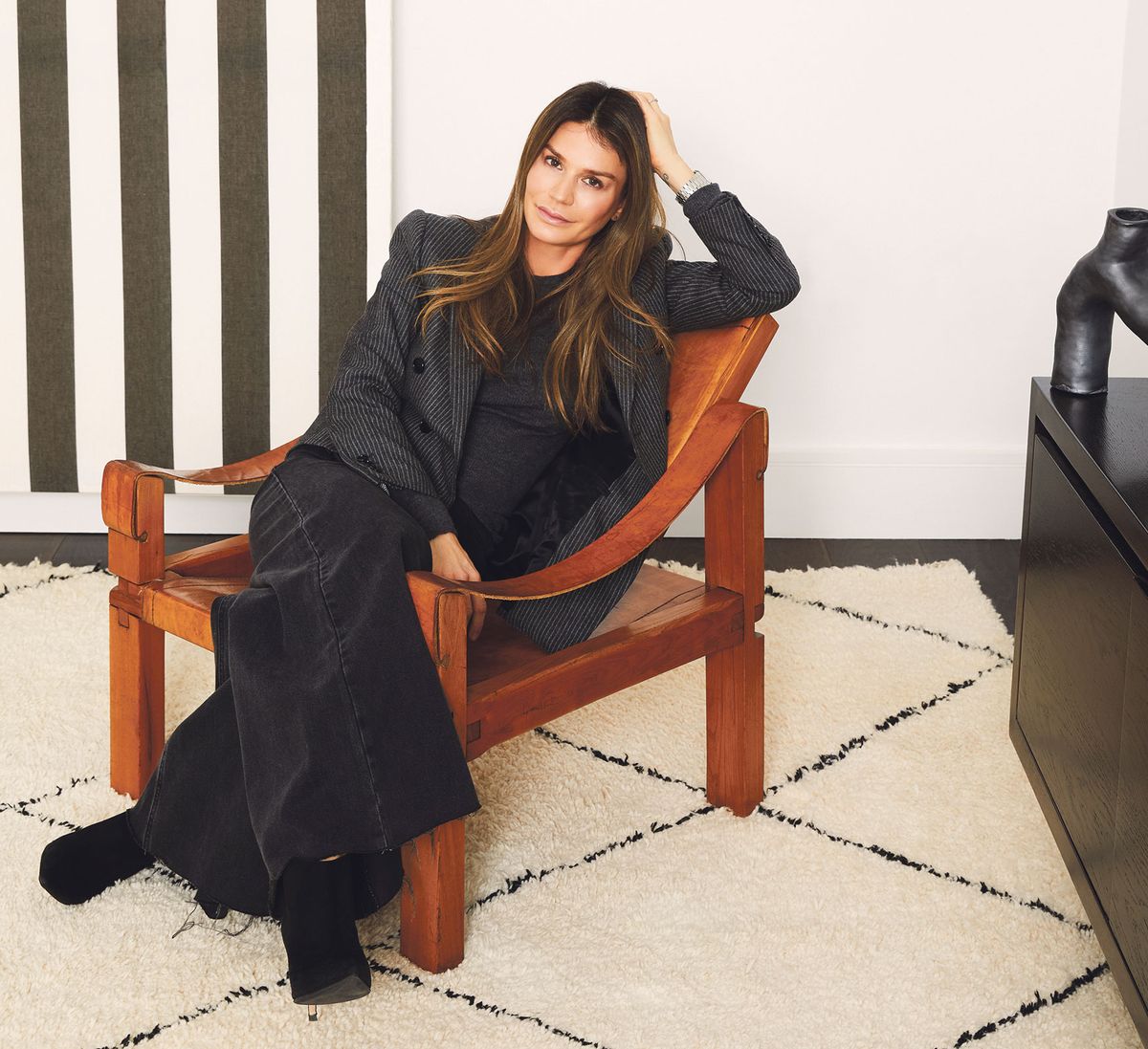Forming a collection as an art adviser might seem something of a busman’s holiday, but for Swiss-born Sibylle Rochat, acquiring work for herself rather than for a client is a totally different process. “I allow myself to buy art that isn’t a good investment. I can’t say the same for my clients,” Rochat says. She founded her advisory, Rochat Art Consultancy, in 2016, following stints working at Christie’s New York and starting her own gallery, SAKS, in Geneva.
Now based in west London, her collection, held between her home in Notting Hill and her Soho office, is “deeply conceptual”, something she attributes to her Swiss heritage. Classic pieces by Daniel Buren and John Baldessari mix with works by younger artists such as George Henry Longly and Kapwani Kiwanga. When she is not advising clients, Rochat is busy co-running Concrete Projects, a non-profit initiative that provides support to artists and institutions in the production of ambitious exhibitions. The organisation has helped stage shows at Chisenhale Gallery in London, the Venice Biennale and the Palais de Tokyo in Paris.
The Art Newspaper: What was the first work you bought?
Sibylle Rochat: A Ricky Swallow from Modern Art, London. It is a bronze cast of a piece of cardboard that has been shot at with a rifle. I often find myself attracted to art with a violent component. There must be something I’m deeply repressing.
What was your most recent buy?
For my own collection, a big painting by a young Ethiopian artist called Nigatu Tsehay. I discovered his work in a group show curated by Amoako Boafo at Marianne Boesky Gallery in New York. Unsurprisingly, there is a violent streak in this work too. But more seriously, I collect mainly with my daughters in mind. For my youngest, Theodora, I choose works by artists of African or mixed-race heritage, as Theodora is Swiss and Nigerian. Through art I hope she will find answers to questions about her identity that I am unable to answer for her.
If your house was on fire, which work would you save?
A Mohamed Bourouissa, but it’s a car door so it’s pretty heavy.
If money were no object, what would be your dream purchase?
A museum. I also have my eye on Manet’s Olympia (1863). I remember studying this work, and what strikes me is how differently it would be talked about today. It has been controversial ever since its creation. Despite perceptions shifting over time, the painting is still relevant to discussions of race, class, gender, etc.
What is the most surprising place you have displayed a work?
I sacrificed my balcony to a giant yellow Franz West sitzskulptur (seat sculpture).
Which artists, dead or alive, would you invite to your dream dinner party?
Anne Imhof and her crew for a performance around a barbecue. I know this could be a potentially unbearable accompaniment to a meal, but it would also be very entertaining and would prevent small talk. It’s good sometimes when talking becomes secondary.
What’s the best collecting advice you’ve been given?
The eye is a muscle. What at first seems unattractive and complex can become the most appealing and give your eye the most pleasure. I make sure my clients know this when looking at works of art: your feelings towards a work and your appreciation of it develop over time.
What have you missed most during lockdown?
My parents in Switzerland.
Have you bought an NFT?
I’ve minted them and purchased them for clients but have never been tempted myself. Art NFTs capture a zeitgeist of our time and reflect the constant evolution in digital rendering technologies, but I don’t think they’re quite there yet conceptually and aesthetically in terms of art.


